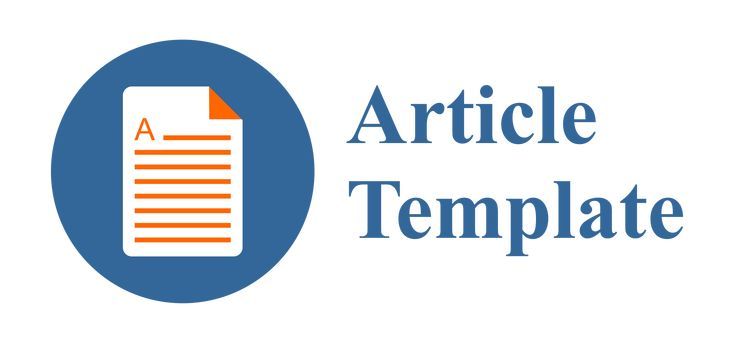Pengembangan Media Pembelajaran Bahasa Inggris yang Praktis dan Efektif Menggunakan Moodle
DOI:
https://doi.org/10.29408/edumatic.v5i2.4132Keywords:
4D, Learning Media, Moodle, WebAbstract
The method of delivering learning by orally as well as giving a note in the form of copy or note, is less successful in time and is not maximally obtained by a student. The purpose of this research is to produce practical and effective learning media used by teacher and student at vocational high school. Web-based learning media using model 3.11.3+, which is applied to the domain and hosting. The type of this research is R&D (research & development), and the product development models are 4D; define, design, develop and disseminate. The instruments used are questionnaire, material, practically and English questions. The subjects of research are teacher and student of SMK Pratama Padang. Data analysis techniques are product validity testing, practical analysis technique and product effectiveness analysis technique. The levels of practicality of the product are 85 (teacher’s respondent) in the practical category and 81.99 (student’s respondent) in the very practical category. The level of product effectiveness based on the gain score reached 0.45, in the medium category.
References
Amandu, G. M., Muliira, J. K., & Fronda, D. C. (2013). Using Moodle E-learning Platform to Foster Student Self-directed Learning: Experiences with Utilization of the Software in Undergraduate Nursing Courses in a Middle Eastern University. Procedia - Social and Behavioral Sciences, 93, 677–683. https://doi.org/10.1016/j.sbspro.2013.09.260
Azmi, R. A. (2020). Pengembangan Media Pembelajaran Berbasis Web Menggunakan Moodle Pada Mata Pelajaran Administrasi Infrastruktur Jaringan di SMKN 1 Sintuk Toboh Gadang. Universitas Negeri Padang.
Azmi, R. A., Rukun, K., & Maksum, H. (2020). Analisis Kebutuhan Pengembangan Media Pembelajaran Berbasis Web Mata Pelajaran Administrasi Infrastruktur Jaringan. Jurnal Imiah Pendidikan Dan Pembelajaran, 4(2), 303–314.
Dharmayanti, W., Dharmayanti, W., & Nurcahyo, R. W. (2021). Analisis dan Perancangan E-Learning Adaptif di Sekolah Menengah Kejuruan. Edumatic: Jurnal Pendidikan Informatika, 5(1), 1–10. https://doi.org/10.29408/edumatic.v5i1.2544
Gora, W. (2005). Belajar Sendiri Membuat CD Multimedia Interaktif untuk Bahan Ajar E-Learning. PT. Elex Media Komputindo.
Goyal, S. (2012). E-Learning: Future of Education. Journal of Education and Learning (EduLearn), 6(2), 239–242. https://doi.org/10.11591/edulearn.v6i4.168
Hanif, H., Maksum, H., Irfan, D., & . W. (2021). Evaluasi Pembelajaran Daring Dismk Negeri 1 Sumatera Barat. Jurnal Education and Development, 9(2), 156–161.
Indra, D., Maksum, H., & Abdullah, R. (2021). Meningkatkan Hasil Belajar Komputer dan Jaringan Dasar Melalui Media Pembelajaran Interaktif. Jurnal Edutech Undiksha, 8(1), 14–22.
Kawuri, M. Y. R. T., Jufriansyah, A., Setiamukti, D. D., & Sulisworo, D. (2019). Implementation E-Learning Based Moodle on Physics Learning in Senior High School. Indonesian Journal of Science and Education, 3(2), 93–102. https://doi.org/10.31002/ijose.v3i2.1178
Lestari, I., & Pratama, M. H. (2020). Pemanfaatan TIK Sebagai Media Pembelajaran dan Sumber Belajar oleh Guru TIK. Edumatic: Jurnal Pendidikan Informatika, 4(2), 95–102.
Maisiswati, B. H., Ismatulloh, K., & Uska, M. Z. (2018). Pengembangan Media Pembelajaran CD Tutorial Interaktif Pada Mata Pelajaran Simulasi Digital. Edumatic: Jurnal Pendidikan Informatika, 2(2), 66–73.
Marsa, A. R., & Yunita, R. (2019). Website Media Pembelajaran Matematika Berbasis Moodle Platform (Studi Kasus : D3 Teknik Komputer STTP). JOISIE (Journal Of Information Systems And Informatics Engineering), 3(1), 1–9.
Maulana, I. (2020). Pengembangan E-Learning Berbasis Moodle. Jurnal Media Aplikom, 12(1), 1–12. https://doi.org/https://doi.org/10.33488/1.ma.2.1.247
Muazizah, N. M., Nurhayati, S., & Cahyono, E. (2016). Keefektifan Penggunaan E-Learning Berbasis Moodleberpendekatan Guided Inquiry Terhadap Hasil Belajarsiswa. Jurnal Inovasi Pendidikan Kimia, 10(2), 1760–1768.
Munir. (2009). Pembelajaran Jarak Jauh Berbasis Teknologi Informasi dan Komunikasi. Alfabeta.
Nikmah, M. (2015). Developing Moodle – Based Interactive Online Media To Teach Narrative Reading in Sma N 13 Semarang. Vision: Journal for Language and Foreign Language Learning, 4(1), 53–72. https://doi.org/10.21580/vjv4i11633
Quesada, J., Calvo, I., Sancho, J., Sainz, J. A., Sanchez, J., Gil-Garcia, J. M., Sebastian, R., & Castro, M. (2013). Combining moodle and redmine as e-learning tools in Project Based Learning of Industrial Electronics. Proceedings - 2013 7th IEEE International Conference on e-Learning in Industrial Electronics, ICELIE 2013, 86–91. https://doi.org/10.1109/ICELIE.2013.6701278
Siddik, B., & Kholisho, Y. N. (2019). Pengembangan Modul Pembelajaran Perakitan Komputer Berbasis Multimedia Interaktif. Edumatic: Jurnal Pendidikan Informatika, 3(1), 13–19.
Sopiatin, P. (2010). Manajemen Belajar Berbasis Kepuasan Siswa. Ghalia Indonesia.
Sudianto, Dwijanto, & Dewi, N. R. (2019). Students’ Creative Thinking Abilities and Self Regulated Learning on Project-Based Learning with LMS Moodle. Unnes Journal of Mathematics Education Research, 8(1), 10–17.
Sugiyono. (2006). Metode Penelitian Pendidikan Pendekatan Kuantitatif, Kualitatif, dan R&D. Bandung: Alfabeta.
Trianto. (2012). Mendesain Model Pembelajaran Inovatif-Progresif Konsep Landasan dan Implementasinya pada KTSP. Kencana.
Downloads
Published
How to Cite
Issue
Section
License
All articles in this journal are the sole responsibility of the authors. Edumatic: Jurnal Pendidikan Informatika can be accessed free of charge, in accordance with the Creative Commons license used.

This work is licensed under a Lisensi a Creative Commons Attribution-ShareAlike 4.0 International License.




